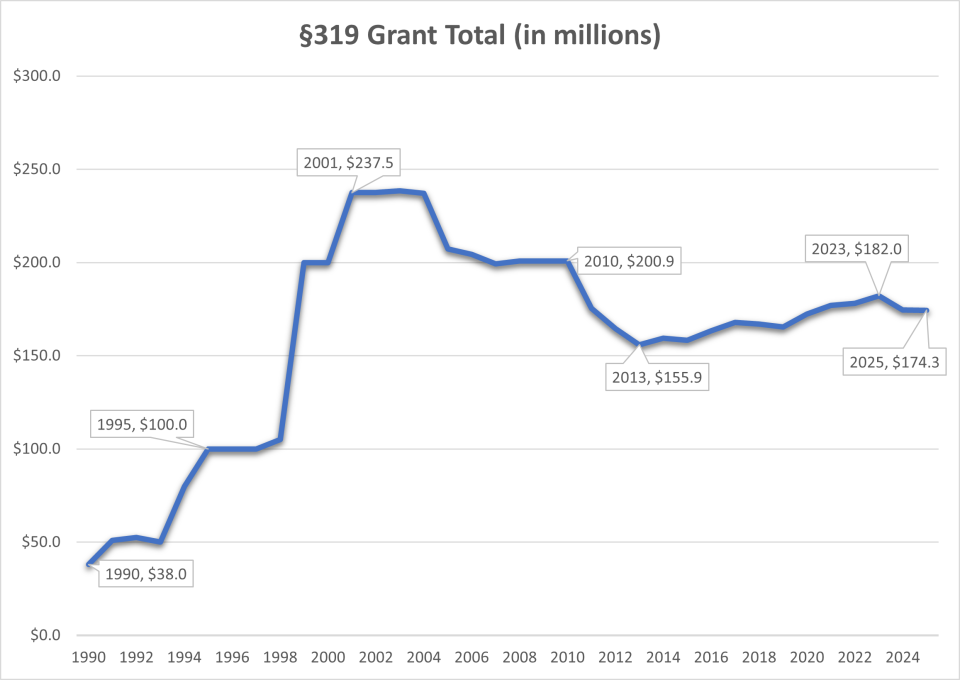319 Grant Program for States and Territories
On This Page:
Background:
The 1987 amendments to the Clean Water Act (CWA) established the Section 319 Nonpoint Source Management Program Section 319 addresses the need for greater federal leadership to help focus state and local nonpoint source efforts. Under Section 319, states, territories and tribes receive grant money that supports a wide variety of activities including technical assistance, financial assistance, education, training, technology transfer, demonstration projects and monitoring to assess the success of specific nonpoint source implementation projects.
319 Grant Funds History:
For detailed year by year funding from 1990 to current funding year, you can download the spreadsheet: Historic 319 Funding (xlsx)

Values for most years are rounded to the nearest $100,000.
Reports and Resources:
Additional resources, reports and evaluations for those working on 319 grants. Success Stories and other completed work are also included in the Restoration and Protection section
- Tribal Nonpoint Source Programs: Working to Solve Water Quality Problems (pdf)
- National Nonpoint Source Program - a Catalyst for Water Quality Improvements (pdf)
- Applying for and Administering CWA Section 319 Grants: A Guide for State Nonpoint Source Agencies (pdf)
- A National Evaluation of the Clean Water Act Section 319 Program (pdf)
- Section 319 Nonpoint Source National Monitoring Program Successes and Recommendations - (pdf)
- Section 319 Final Project Reports Workshop (pdf)
